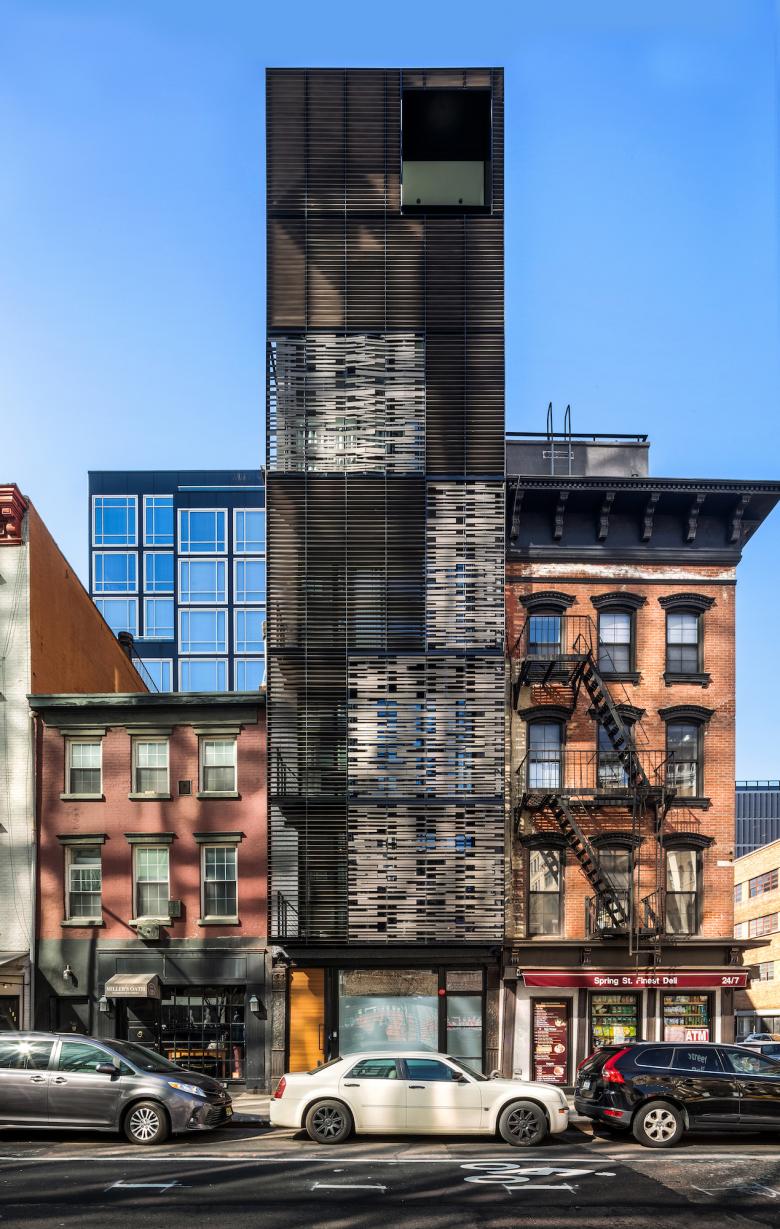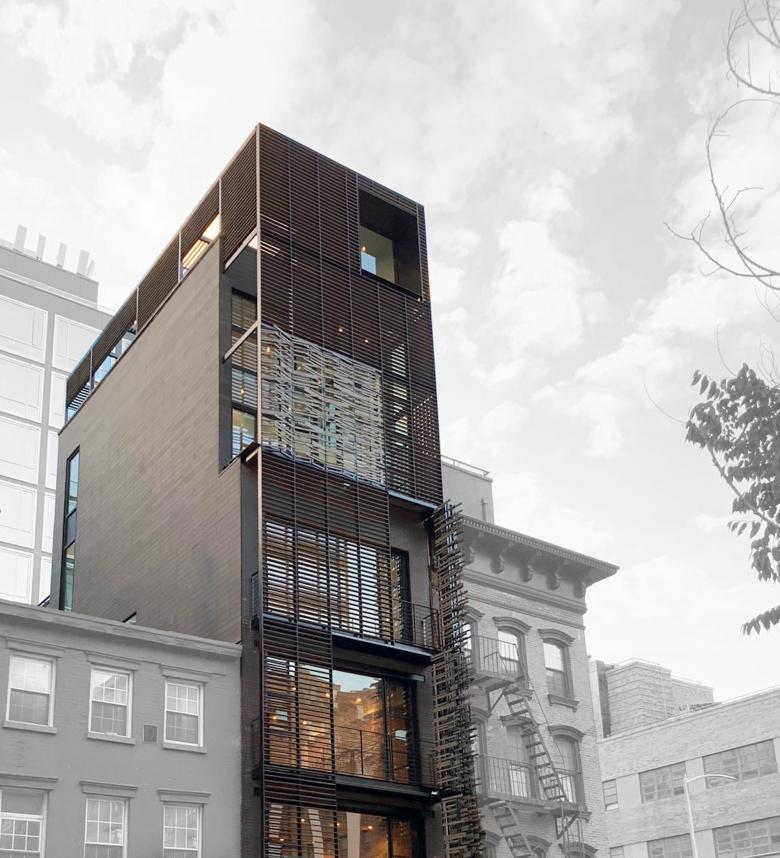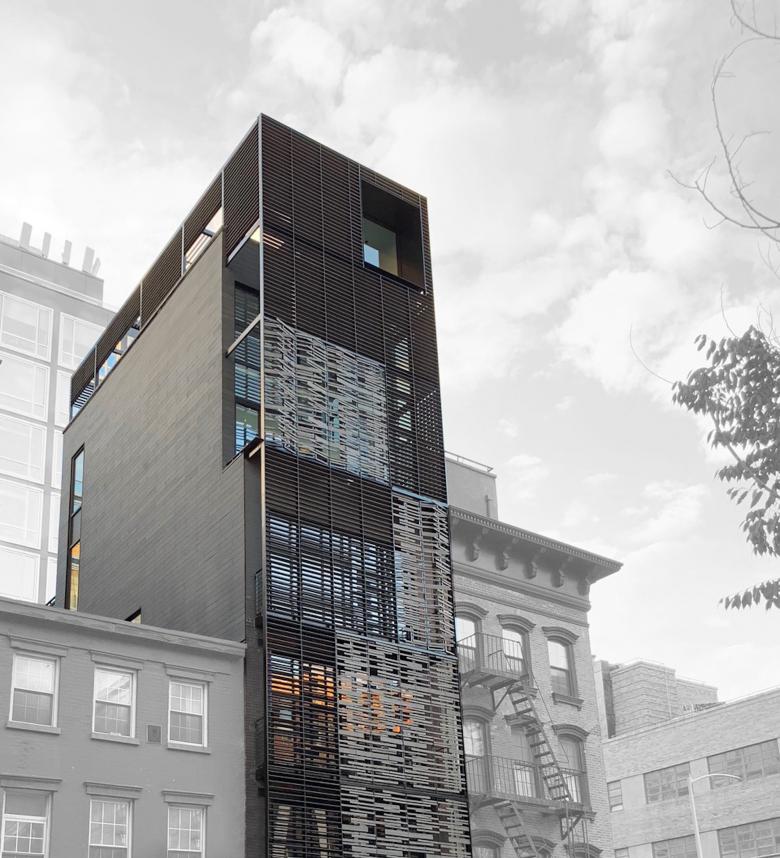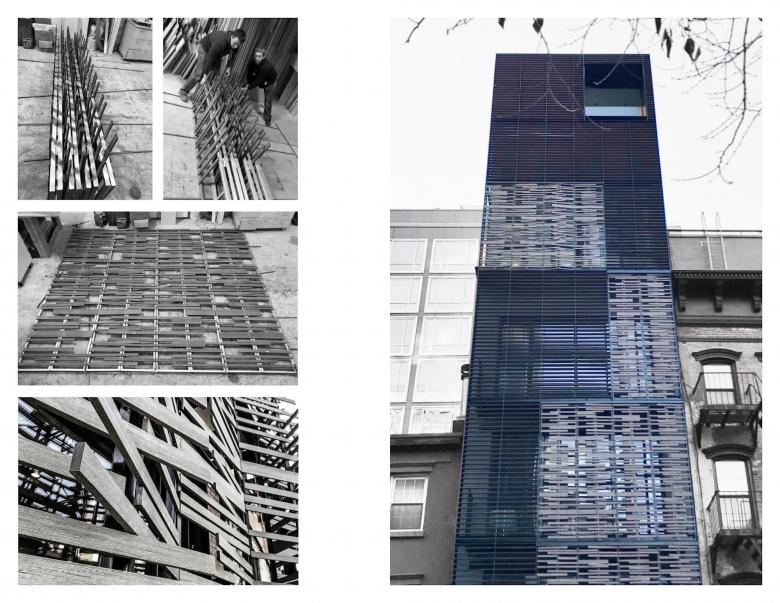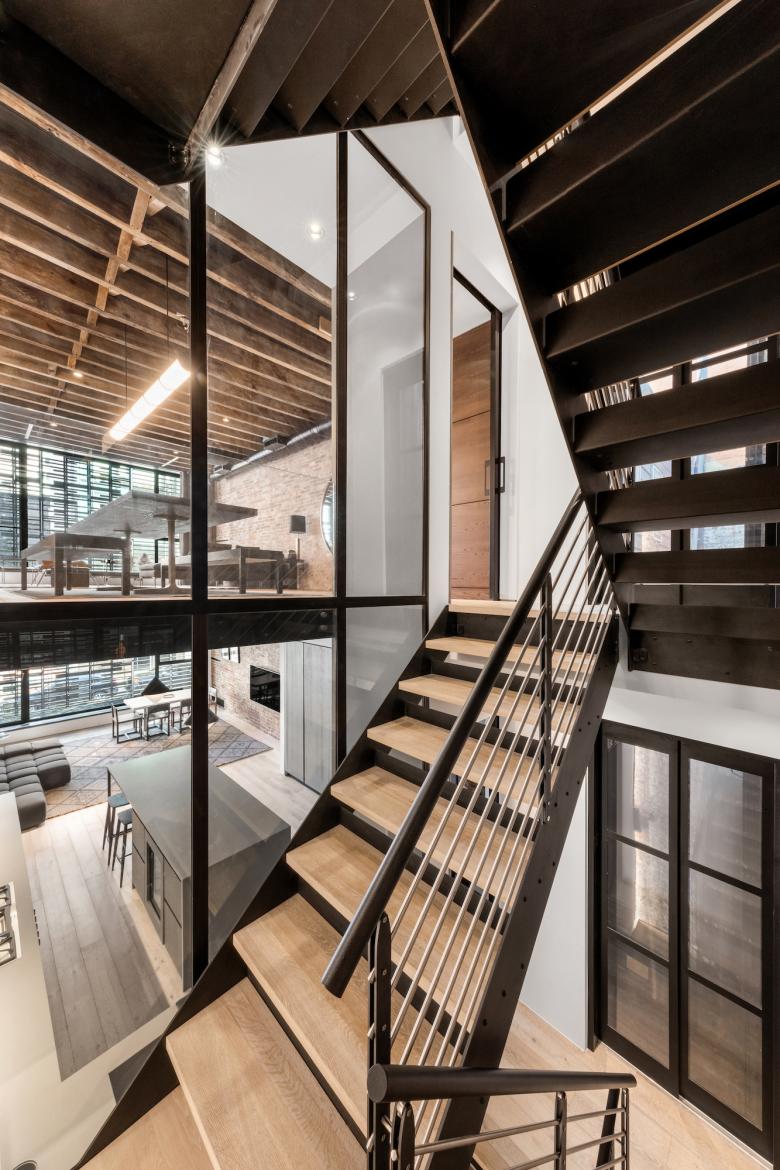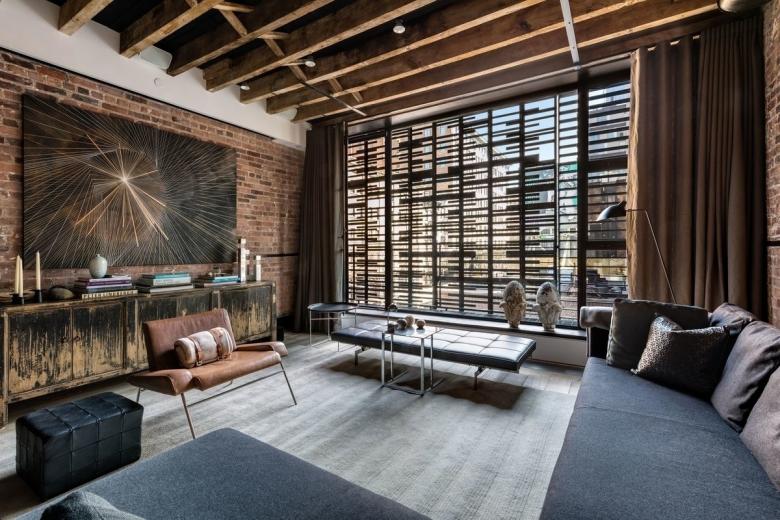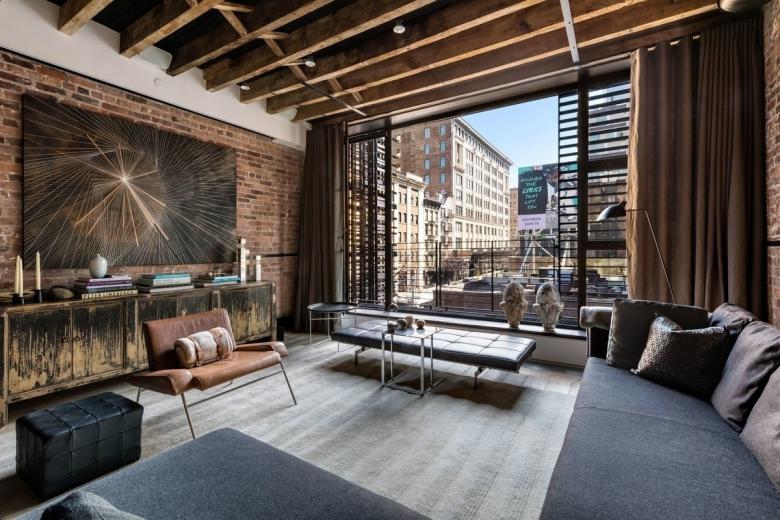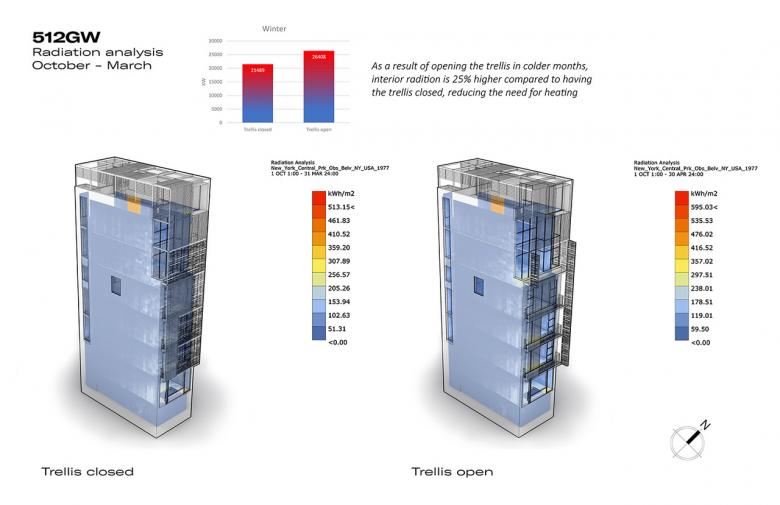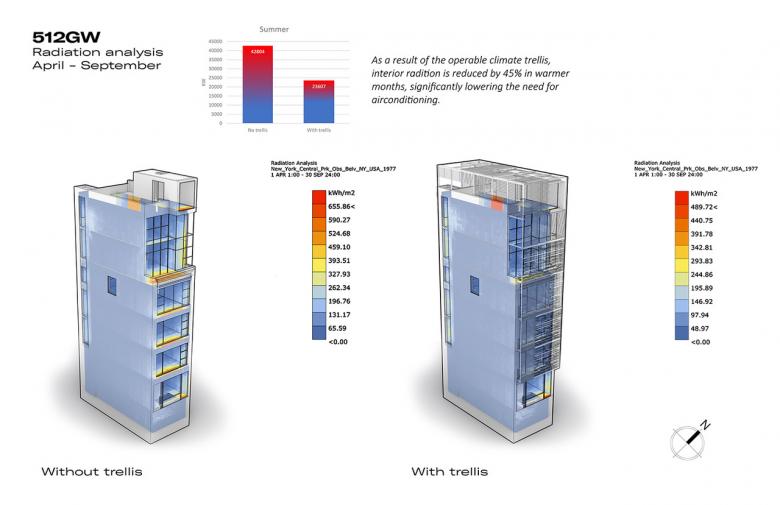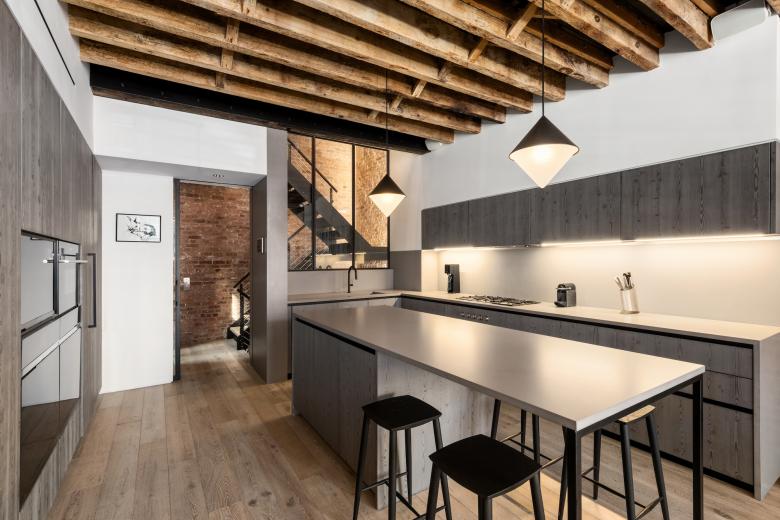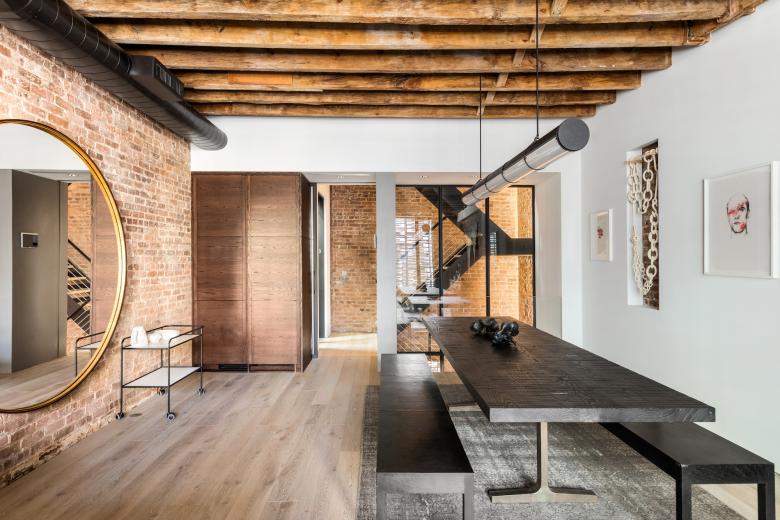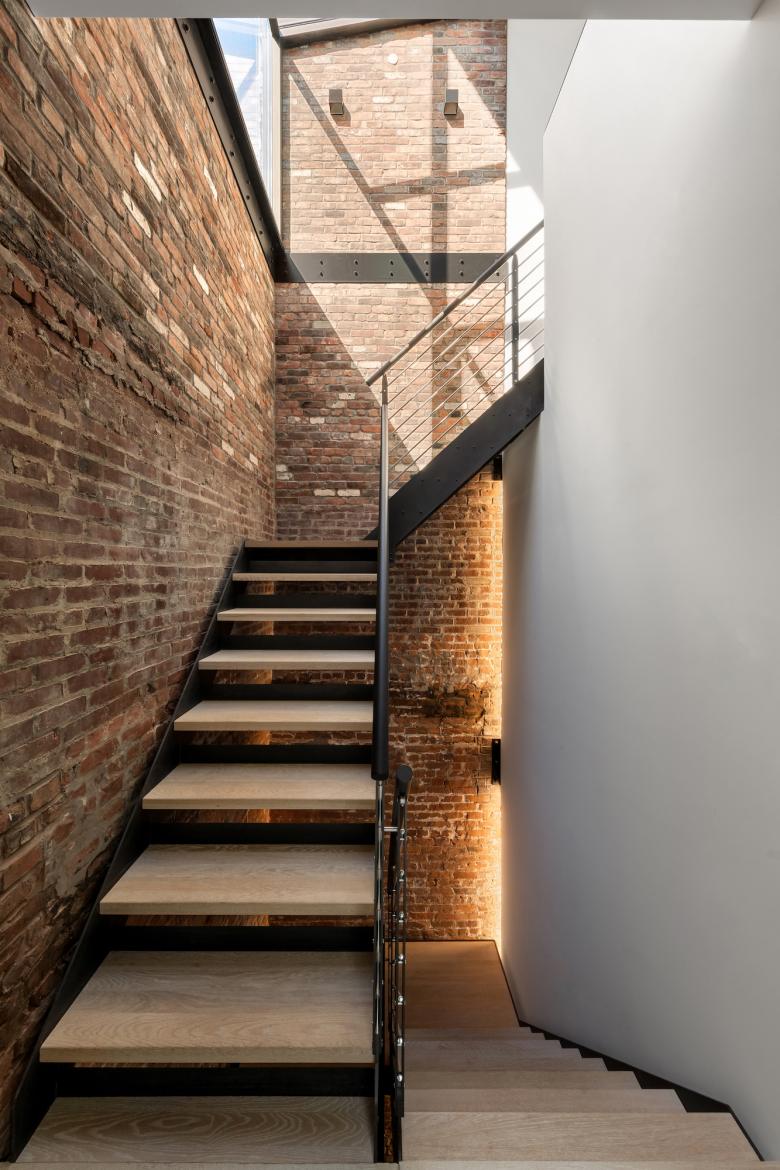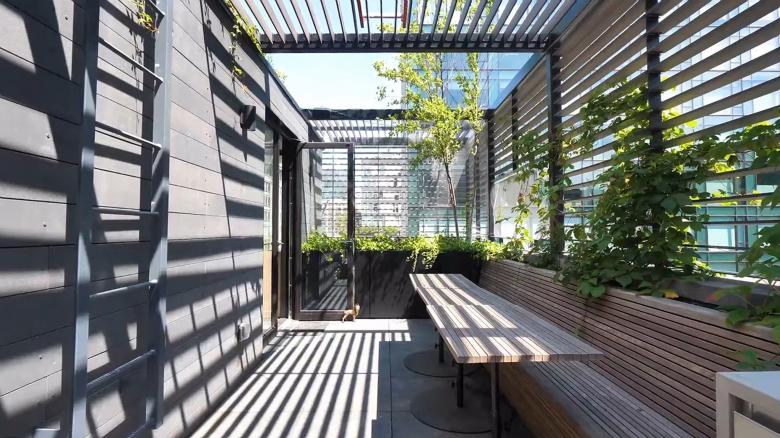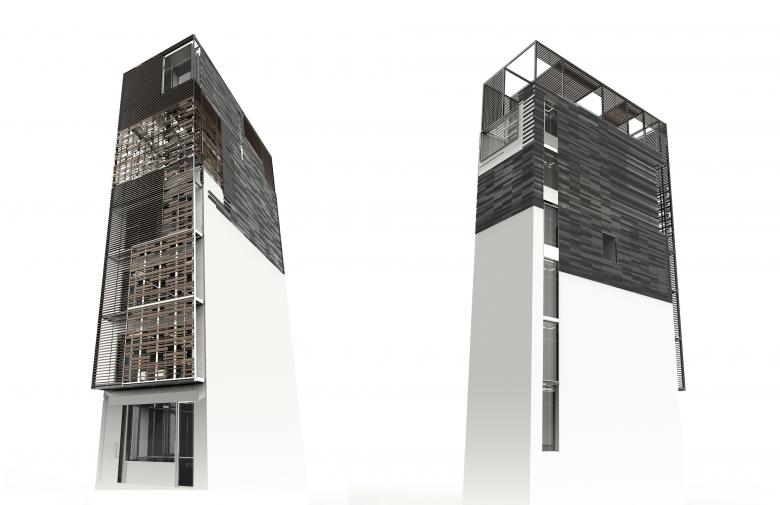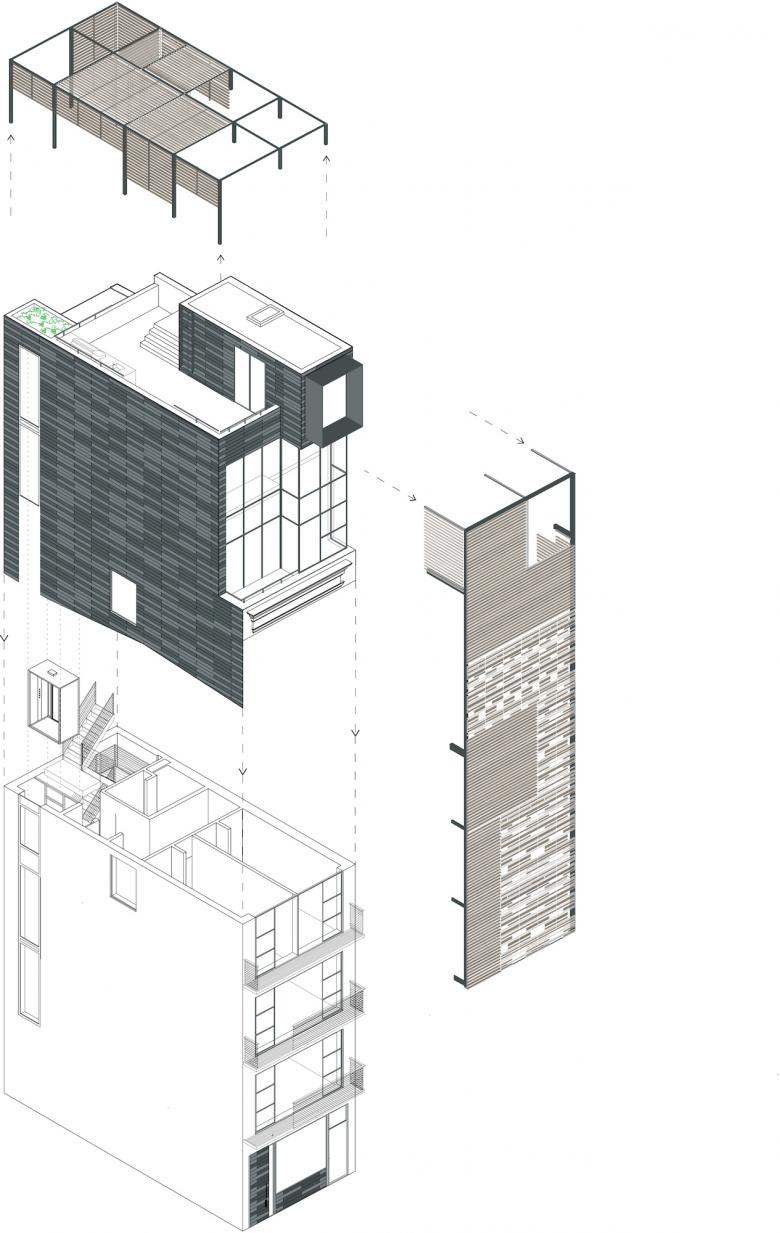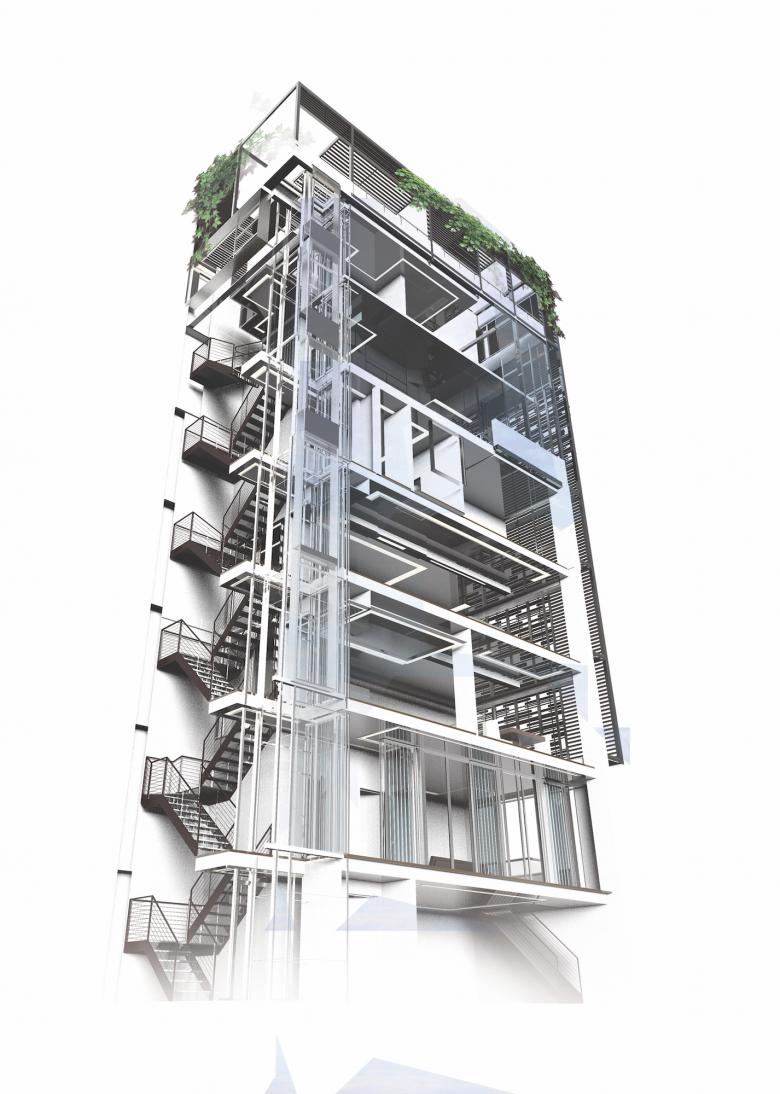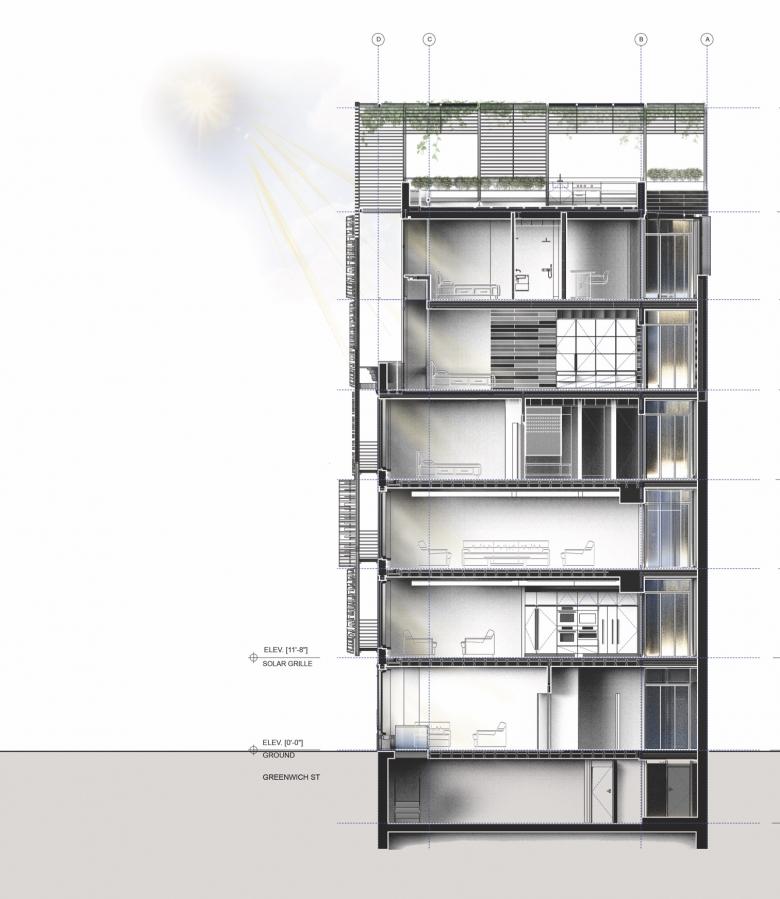US Building of the Week
512 GW Townhouse
Archi-Tectonics
14. June 2021
Photo: Evan Joseph
Across the street from Archi-Tectonics' earlier 497 GW apartment building, the 512 GW Townhouse similarly reuses an old warehouse, transforming 19th-century industry into 21st-century residential luxury. While the predecessor used undulating glass to make a statement, the new townhouse is covered in a six-story veil to further stand out from its neighbors. Winka Dubbeldam answered a few questions about the 512 GW Townhouse.
Location: New York, NY, USA
Client: Private
Designer: Archi-Tectonics
- Principle in Charge: Winka Dubbeldam, Assoc. AIA
- Project Leaders: Justin Korhammer, Hanxing Zu
- Project Team: Avra Tomara, Boden Davies, Hsiang Wei
Structural Engineer: Cantor & Seinuk Engineers, PC
Mechanical Engineer: 2LS Consulting Engineering
Interior Designer: Archi-Tectonics
General Contractor: Galcon Construction
Site Area: 760 sf
Building Area: 4,500 sf + roof terrace and balconies
See bottom for Important Manufacturers / Products.
Trellis open (Photo: Archi-Tectonics)
Please provide an overview of the project.The goal of this renovation of and addition to a residential townhouse in SoHo rethought how a building could actively contribute to a more sustainable urban realm. The building volume setbacks are inscribed within in a unifying, rectangular trellis envelope of multiple patterns and densities. Made from lightweight steel frame and folding panels clad with Trespa slats, this “smart passive climate control envelope” serves as an adaptable perimeter of the building. It provides solar heating in winter and shading and ventilation in summer, while also creating variable levels of privacy for a variety of outdoor balconies and roof terraces.
Trellis closed (Photo: Archi-Tectonics)
What are the main ideas and inspirations influencing the design of the project?Three Buildings
Understanding the current economic and environmental climate, and how it relates to our wellness, we decided to rethink the impact of the residence’s footprint on the environment. By adding a large extension onto an existing building with a footprint of only 19 x 40 feet, we converted this townhouse into an 8-story vertically stacked tower of rooms, wrapped within a spacious lattice envelope functioning as a climatic skin: the third "building."
Challenge
We addressed the challenge of nearly doubling the original townhouse into an 8-story single residence by assembling the additional program as interlocking vertical volumes that intersect to maximize spatial variety. Strategic cuts allow light to enter deep into the building section and create curated views.
Photo: Archi-Tectonics
How does the design respond to the unique qualities of the existing building?The existing warehouse was completely renovated and all existing bricks and wood beams were cleaned and revealed. The extension is a compilation of glass and steel. The exterior however was completely wrapped in the climate skin, essentially adding a whole new layer to the exterior facade.
Photo: Evan Joseph
How did the project change between the initial design stage and its completion?A collaborative working environment between Archi-Tectonics, Trespa, Galcon Construction, and more led to an exploratory prototyping phase, during which full-scale mockups of the folding facade were tested. Detailed tolerances and overlaps, as well as a large-scale actuator, helped make movement of the operable trellis seamless: when closed, its panels form a smooth surface; when open, they fold out like feathers of a bird's wing.
Trellis closed (Photo: Evan Joseph)
Trellis open (Photo: Evan Joseph)
Was the project influenced by any trends in energy-conservation, construction, or design?The innovative folding climate-envelope modulates exposure to passively regulate internal temperatures, resulting in a total annual energy savings of up to 45%. This was studied on a software called Honeybee, which supports detailed daylighting and thermodynamic modeling. Specifically, it creates, runs and visualizes the results of daylight simulations using Radiance, energy models using EnergyPlus/OpenStudio, and heat flow through construction details using Berkeley Lab Therm/Window. It accomplishes this by linking these simulation engines to CAD and visual scripting interfaces such as Grasshopper/Rhino and Dynamo/Revit plugins. It also serves as an object-oriented Application Programming Interface (API) for these engines. For this reason, Honeybee is one of the most comprehensive plugins presently available for environmental design.
Honeybee analysis — winter
Honeybee analysis — summer
Important Manufacturers / Products:- Trellis facade panels: Trespa Meteon
- Extension facade panels: öko skin by Rieder
- Thermally broken steel windows/doors: Mix-Legno Italy
- Fire-rated frames for elevator windows: SAFTI
- Prefabricated stairs: Ascent
Email interview conducted by John Hill.
Photo: Evan Joseph
Photo: Evan Joseph
Photo: Evan Joseph
Photo: Evan Joseph
Drawing: Archi-Tectonics
Drawing: Archi-Tectonics
Drawing: Archi-Tectonics
Drawing: Archi-Tectonics
Related articles
-
512 GW Townhouse
on 6/14/21
-
INSCAPE
on 1/5/17
